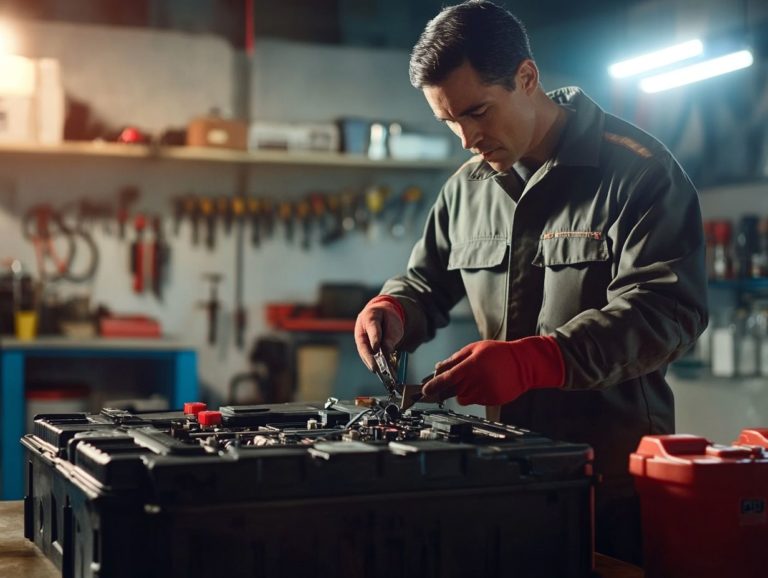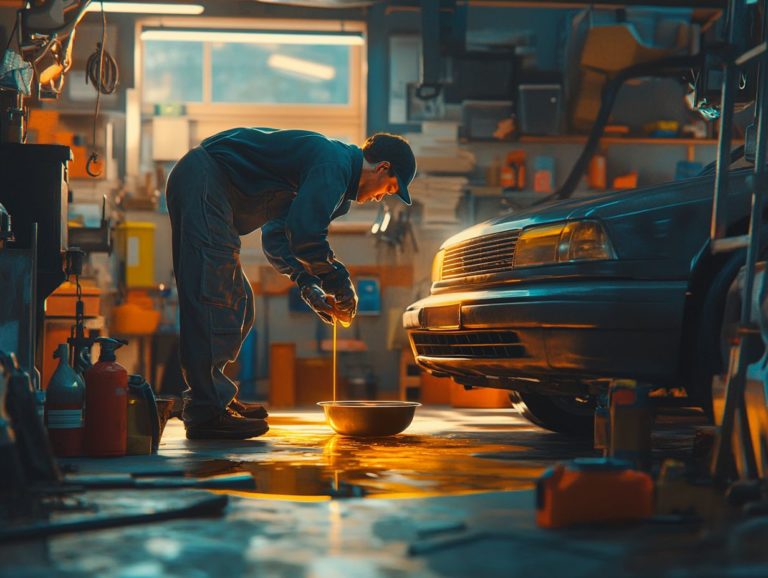How to Maintain Your Car’s Suspension?
Your car’s suspension system is essential for a smooth and safe ride. Yet, many drivers often overlook its significance. In this article, you’ll learn about car suspension, guiding you on how to identify common issues and uncover their potential causes.
You ll discover a recommended maintenance schedule, along with DIY tips to keep your suspension in optimal condition. Plus, you’ll learn when it’s time to bring in the professionals.
We also break down the costs associated with suspension work and share clever ways to save money.
Whether you’re a seasoned mechanic or a novice car owner, this guide will empower you to maintain your vehicle’s suspension system, ensuring it runs flawlessly.
Contents
- Key Takeaways:
- Signs of Suspension Problems
- Causes of Suspension Issues
- Regular Maintenance for Suspension
- DIY Suspension Maintenance
- When to Seek Professional Help
- Cost of Suspension Maintenance
- Frequently Asked Questions
- How to Maintain Your Car’s Suspension?
- Why is it Important to Maintain Your Car’s Suspension?
- How Often Should You Have Your Car’s Suspension Inspected?
- What Are Signs That Your Car’s Suspension Needs Maintenance?
- Can You Perform Maintenance on Your Car’s Suspension Yourself?
- Is it Worth Upgrading to High-Quality Suspension Components?
Key Takeaways:
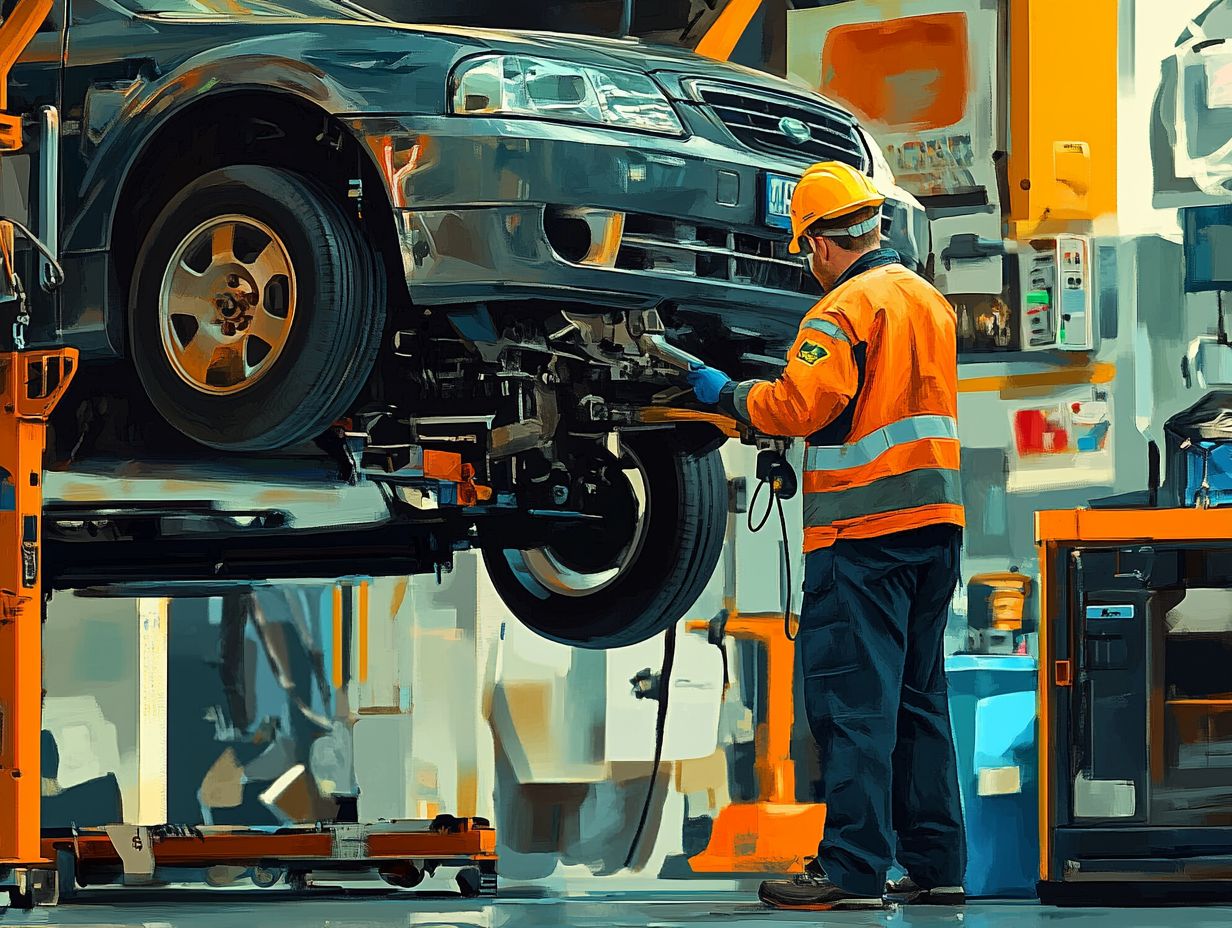
- Regular maintenance is key to keeping your car’s suspension in good condition and avoiding costly repairs.
- Some common signs of suspension issues include uneven tire wear, bouncing or swaying while driving, and a rough ride.
- DIY maintenance can help you save money, but know when to seek professional help for more complex suspension problems.
What is Car Suspension?
Car suspension is more than just a collection of parts; it s a sophisticated system designed to support your vehicle’s weight and absorb road shocks. It helps deliver exceptional handling performance.
This vital assembly features components like shock absorbers, coil springs, and parts that help cushion your ride. They work together to create a comfortable driving experience while maintaining optimal tire pressure.
These components ensure your vehicle gracefully tackles uneven surfaces, boosting stability and control as you navigate. For example, shock absorbers calm those pesky oscillations from bumps, while coil springs absorb energy to keep your tires firmly planted on the road. This synergy is crucial for maximizing tire performance, which directly influences your handling and traction.
Keeping your tire pressure in check not only extends the life of your tires but also enhances fuel efficiency and overall vehicle health. Establishing a routine maintenance schedule that includes regular inspections and tire checks allows you to catch issues early, ensuring a safe ride.
Consulting with experts during these checkups can provide helpful tips into your suspension system’s condition, ultimately elevating both performance and safety on the road.
Signs of Suspension Problems
Identifying the early signs of suspension problems can save you from costly repairs and enhance your safety on the road. Look out for common indicators, such as uneven tire wear, which may suggest issues with wheel alignment or worn suspension components.
Pay attention to any unusual noises, like clunking or squeaking when you navigate bumps or uneven surfaces these are clear warning signs. Sagging springs can hurt your vehicle’s handling and overall ride comfort, so it’s essential to recognize these symptoms promptly.
Common Symptoms to Look Out For
A bumpy ride is often one of the most telling signs that your vehicle may be facing suspension issues. This discomfort impacts both your comfort and control behind the wheel. It can even lead to fatigue on longer journeys, making it essential to maintain your focus for safe driving.
You might notice excessive noise from suspension components, like creaking or clunking sounds. These could point to worn-out parts or damaged cushioning systems, resulting in a jarring experience on the road. If you find your vehicle leaning heavily to one side during turns, that s a clear signal of inadequate support, heightening the risk of losing control.
Monitor changes in tire pressure or fluid levels within hydraulic systems, as these could indicate leaks or loss of pressure, further complicating your driving experience. Regular maintenance, including periodic suspension inspections, can make a significant difference in addressing these issues.
For complex suspension problems, seeking professional help is not just about enhancing safety; it promotes the longevity and optimal performance of your vehicle. Don’t wait until it’s too late! Regular checks can save you from costly repairs.
Causes of Suspension Issues
Understanding the causes of suspension issues is vital for maintaining your vehicle’s safety and performance over time. Common culprits include wear and tear on suspension components from rough driving conditions, neglecting regular maintenance, and improperly inflated tires. These factors can result in uneven tire wear.
Frequent encounters with potholes and bumpy roads can hasten the deterioration of important parts like shock absorbers and coil springs. To keep your vehicle running smoothly and avoid costly automotive problems, it s essential to adhere to a proper maintenance schedule.
Possible Reasons for Suspension Problems
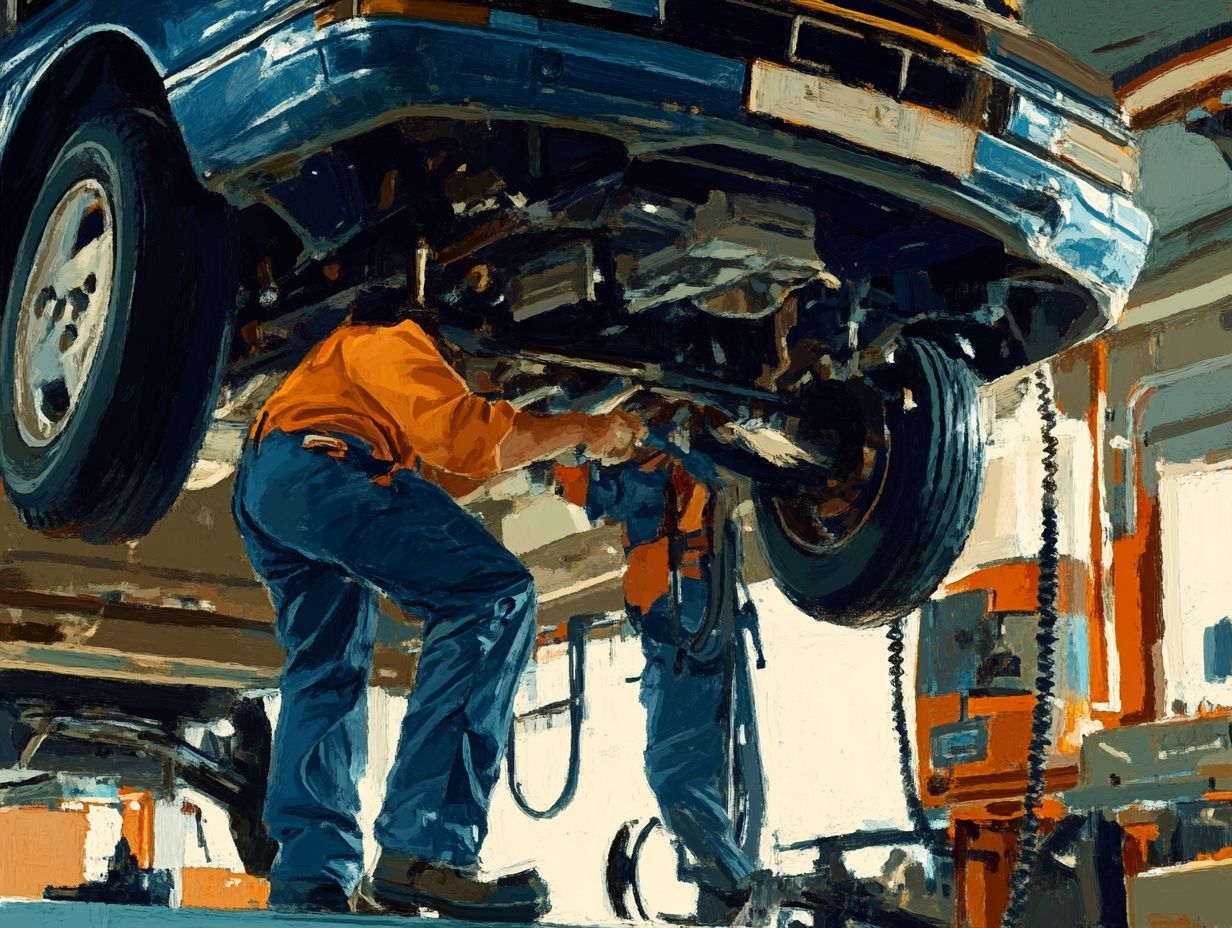
Suspension problems can stem from several potential issues, including the need for shock replacement, incorrect tire pressure, and neglecting essential maintenance recommendations. Over time, shock absorbers, which help control the impact of bumps on the road, can wear out, diminishing both handling performance and comfort during your drives.
If tire pressure is not maintained properly, it can worsen suspension issues, leading to uneven tire wear and a bumpy ride. Regular inspections and expert guidance are crucial for keeping your vehicle in optimal condition.
When you overlook the replacement of worn shock absorbers, you may not notice how significantly your vehicle’s ability to absorb road irregularities has declined. This results in a noticeably harsher driving experience. Inadequate shock performance can lead to excessive bouncing over bumps, compromising your steering and control. Likewise, improper tire pressure not only affects fuel efficiency but also accelerates tire wear, often causing alignment issues.
Expert technicians stress that maintaining the correct tire pressure and routinely replacing worn components are vital steps in safeguarding your vehicle’s suspension system. These practices ensure both performance and safety on the road.
Regular Maintenance for Suspension
Regular maintenance of suspension systems is crucial for ensuring your vehicle’s health and longevity. It also elevates your driving experience. This involves conducting routine check-ups centered on suspension components, following a well-structured maintenance schedule, and prioritizing inspections at intervals recommended by expert technicians.
By taking these proactive steps, you can prevent costly repairs and sustain optimal handling performance. This ensures your ride remains smooth and enjoyable.
Recommended Maintenance Schedule
A recommended maintenance schedule for suspension systems typically suggests routine checkups every 6,000 to 10,000 miles, or as directed by your vehicle manufacturer. This helps prevent any automotive headaches. The schedule involves inspecting essential components like shock absorbers, coil springs, and struts, along with performing a wheel alignment to ensure you enjoy optimal driving control and comfort.
For different vehicle types like cars, trucks, and SUVs, it’s important to tailor your maintenance approach. Cars might need more frequent inspections because of their lighter frames. In contrast, trucks and SUVs, often bearing heavier loads and tackling rougher terrains, require more robust evaluations of their suspension systems.
Regular inspections not only boost performance but also extend the life of your components, minimizing the chances of costly repairs down the road. Don t wait! Replace worn-out parts promptly to avoid problems. Seeking a professional inspection guarantees a thorough assessment, keeping your safety and driving efficiency at the forefront.
DIY Suspension Maintenance
Engaging in DIY suspension maintenance is a superb strategy for vehicle owners keen on keeping their cars in top-notch condition. It enables you to tackle essential tasks, such as regularly checking fluid levels and tire pressure.
By employing a tire gauge and performing routine inspections, you can detect early signs of suspension problems. Act quickly to prevent minor issues from becoming major headaches! Think oil changes and replacing worn components before they escalate into more significant issues.
Step-by-Step Guide for Basic Maintenance
A step-by-step guide for maintaining your car’s suspension system can significantly enhance its longevity and ensure your safety on the road.
Start by conducting a thorough inspection of all suspension components, such as shock absorbers (which help smooth out your ride by absorbing bumps), coil springs, and struts, to pinpoint any potential issues.
Regularly check your tire pressure. Maintaining the correct levels is vital for balanced driving and optimal handling performance. Don t hesitate to consult expert advice for any necessary replacements.
Examine the alignment (the angle of your wheels) and balance (weight distribution of your tires) of your wheels. Misalignment can lead to uneven tire wear and compromised handling.
Keep an eye out for any signs of leaking fluid around your shock absorbers, as this could signal that they need replacing. Also, inspect the rubber bushings for any cracks or degradation, as these can negatively impact ride quality.
To stay organized, create a checklist for routine checkups that includes:
- Inspect the condition of your suspension components every six months.
- Replace worn-out parts every 50,000 miles.
By keeping an eye on these factors, you ll contribute significantly to a smoother driving experience and enhanced vehicle safety.
When to Seek Professional Help
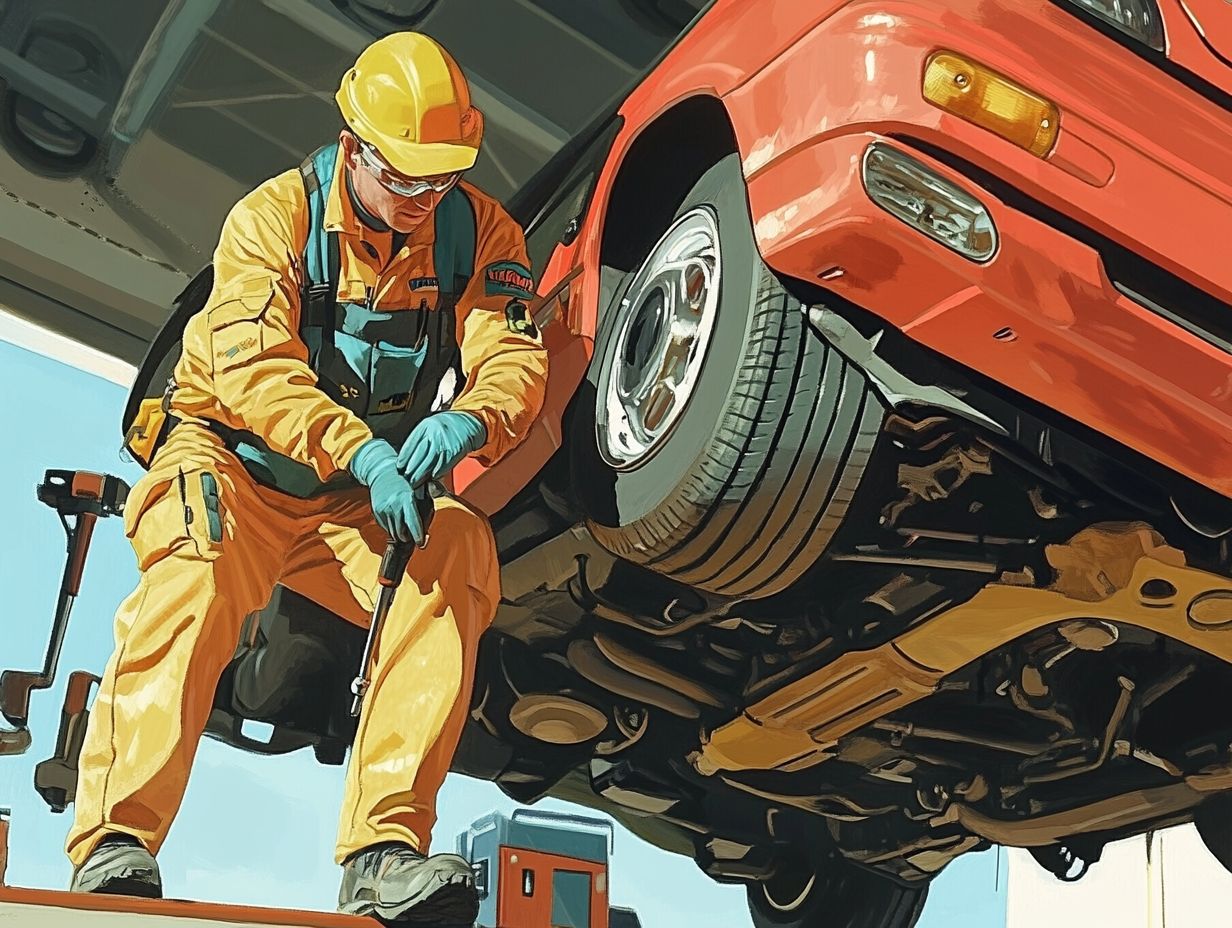
Understanding when to seek professional assistance for suspension issues is crucial for preserving your vehicle’s integrity and ensuring your safety on the road.
If you notice symptoms like pronounced noise from suspension components, excessive swaying during your drives, or uneven tire wear patterns, it’s crucial to consult expert technicians.
They can conduct comprehensive suspension inspections and offer tailored repair recommendations that align with your maintenance schedule.
Indicators for Professional Repair
Several indicators can signal that it s time to seek professional repair for suspension issues. If you re hearing persistent noise from shock absorbers, noticing visible sagging of springs, or experiencing a bumpy ride that compromises your driving comfort, it s essential to take action.
Don t ignore uneven tire wear or signs of misalignment; these should prompt you to consult an expert immediately to safeguard the long-term health of your vehicle.
Ignoring warning signs can lead to a cascade of complications, including deteriorating steering response and compromised braking efficiency. Over time, neglecting suspension problems can escalate into costly repairs and serious safety hazards.
For example, worn bushings can cause further damage to the suspension system, while leaking shock absorbers can impair your vehicle’s control.
Engaging in professional inspections and timely repairs is crucial. Addressing these indicators early not only enhances your driving experience but also extends the lifespan of vital suspension components.
Cost of Suspension Maintenance
The cost of suspension maintenance can fluctuate considerably depending on various factors, including the type of vehicle you own, the specific suspension components involved, and the expertise of the technicians handling the repairs.
Replacing shocks, struts, and other critical parts can contribute to the overall maintenance expense, making it essential to grasp the financial implications and budget accordingly.
Knowing these factors helps you make smart choices for your vehicle!
Factors Affecting Cost and Ways to Save Money
Several factors influence the cost of suspension maintenance for your vehicle, including the complexity of repairs, the type of vehicle you drive, and local market rates for expert services.
To keep expenses in check, establish a regular maintenance schedule to catch minor issues before they become costly repairs. Seek recommendations from trusted automotive technicians to make informed choices.
Understanding how different suspension parts function will help you recognize early signs of wear and tear, like unusual noises or changes in handling. Invest time in periodic inspections, especially before seasonal changes, to identify potential problems early on.
Utilize online resources and forums for valuable insights from fellow vehicle owners, which can inform your repair decisions. Always obtain multiple quotes and recommendations for parts and service; this will help you find the best deal while ensuring quality work, leading to long-term savings on maintenance costs.
Frequently Asked Questions
How to Maintain Your Car’s Suspension?
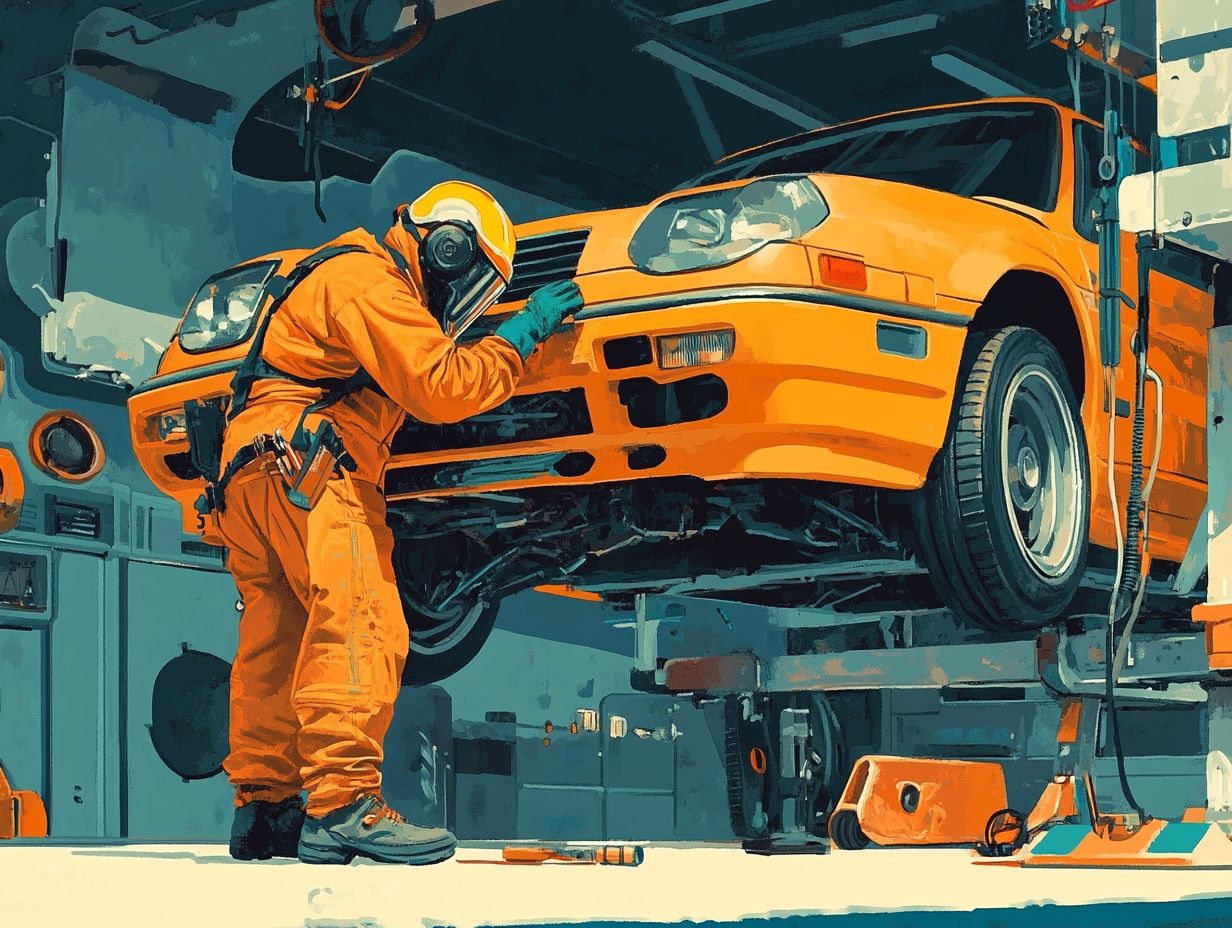
To maintain your car’s suspension, follow these steps:
- Regularly inspect suspension parts for signs of wear, such as cracks or leaks.
- Check tire pressure and alignment regularly, as these affect suspension performance.
- Have a trained mechanic inspect and service your suspension system every 50,000 miles or as recommended by your car’s manual.
- Avoid driving over rough roads or potholes, as this can strain your suspension.
- Consider upgrading to high-quality suspension parts for better performance and longevity.
- Lubricate suspension components as recommended in your car’s manual.
Why is it Important to Maintain Your Car’s Suspension?
Maintaining your car’s suspension is crucial for several reasons:
- It ensures safe and comfortable driving by providing stability and absorbing shocks from bumps.
- Regular maintenance can prevent costly repairs in the future.
- A well-maintained suspension system improves your car’s handling and overall performance.
- It extends the lifespan of your tires and suspension parts.
How Often Should You Have Your Car’s Suspension Inspected?
Inspect your car’s suspension at least every 50,000 miles or as recommended by your car’s manual. However, if you notice any changes in handling or performance, get it checked right away!
What Are Signs That Your Car’s Suspension Needs Maintenance?
Common signs that your car’s suspension may need maintenance include:
- Uneven tire wear or alignment issues.
- Excessive bouncing or swaying while driving.
- Noise or squeaking coming from the suspension.
- Difficulty steering or feeling every bump in the road.
- Visible damage or leaks on suspension parts.
Can You Perform Maintenance on Your Car’s Suspension Yourself?
Some basic maintenance tasks, like checking tire pressure and lubricating components, can be done at home. However, it’s best to have a trained mechanic inspect and service your suspension system. They have the expertise and tools to diagnose issues and make necessary repairs.
Is it Worth Upgrading to High-Quality Suspension Components?
Upgrading to high-quality suspension components can be worthwhile for those seeking improved performance and longevity. However, choose the right parts for your specific car and driving needs, and have them professionally installed to ensure proper function.



